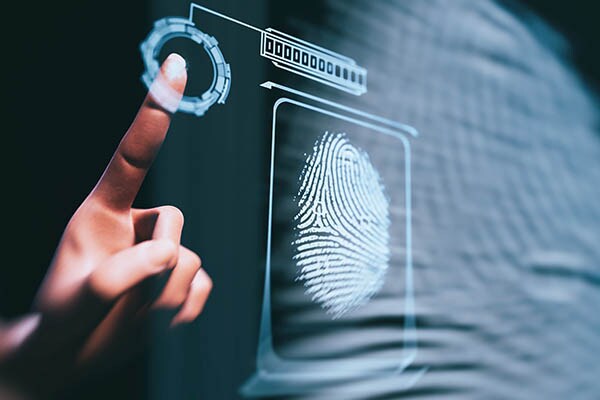- Johnson Controls
- Building Insights
- Why Mobile Credentials Should be Part of Your Access Control Program
Why mobile credentials should be part of your access control program
Businesses have begun to replace plastic, smart card badges with mobile credentialing capabilities, harnessing the versatility that smart phones have to offer in a device that many employees already own and use daily.

By Brian McCarthy, Product Manager, Security Products, Building Technologies & Solutions
According to Pew Research Center, 97 percent of Americans own a mobile phone. And of those who own a mobile phone, 85 percent of those are smart phone devices.
Smart phones have become an integral part of our everyday lives, serving as a critical communication tool beyond text messaging and the ability to make a phone call. In fact, many people today would admit to feeling lost without a smart phone and the functionality it provides, ranging from digital wallets and maps to social media content and food delivery applications.
Over the years we have begun to see the use of smart phones migrate from that of a personal device to a business resource. Beyond email access, smart phones deliver applications that can track work hours, manage expense reports and enable video conferencing capabilities.
In tandem with this, businesses have begun to replace plastic, smart card badges with mobile credentialing capabilities, harnessing the versatility that smart phones have to offer in a device that many employees already own and use daily.
A mobile credential is less likely to get lost, be misplaced or used by an unauthorized person.
Here are a few reasons why now is an ideal time to incorporate mobile credentials into your access control platform.
Mobile credentials are secure
With any access control system, it’s important to make sure the proper measures are in place to ensure the system and process is fully secure. Badges and pins can easily be shared between employees to unlock a door, making it difficult to safeguard against unapproved access or to fully track who is coming and going at a particular day and time.
Some people may think that a mobile credential technology is not a secure solution, but this assumption is not accurate. Multi-factor authentication capabilities are now incorporated into smart phones to help ensure these devices remain secure from unauthorized users. In fact, the smart phones of today enable users to leverage multi-factor authentication capabilities – such as facial recognition, biometrics and a passcode – to unlock the smart phone device.
In addition, each smart phone holds a trusted ID number which is encrypted in a bit format which makes it more difficult to replicate the ID number. By using Bluetooth Low Energy (BLE), an optional higher level or security is added by ensuring that the mobile credential holder is physically at the door.
Mobile credentials are convenient
Unlike a plastic credential or a key, a mobile credential is less likely to get lost, be misplaced or used by an unauthorized person. Like a set of house keys, most people do not leave their home or apartment without their smart phone in hand.
Downloading an application for mobile credential capabilities is also an easy process and requires minimal set-up by the user, with access permissions pre-determined as part of the management of mobile credential holders. Mobile credentials work just like a plastic badge, and badge holders can continue to be managed from a central point.
Mobile credentials save time and money
By eliminating ID badges, businesses can save time and money by having employees and visitors use their smart phone as their credential. Managing access cards can become expensive, especially when taking into account the cost of the badge itself along with the time and effort required to replace broken, lost, or forgotten badges. In specific industries, such as the hospitality or higher education market, such as universities and colleges, managing badges can become expensive because of the high rate of turnover of the cardholders themselves and the frequency of lost or misplaced cards.
The adoption of mobile credential technology will continue to grow in the coming years and because of this it is important to understand the benefits this solution provides. As technology evolves, the security industry also needs to be prepared to leverage these solutions built on the smart devices we have come to so heavily rely upon.
Related Items
5 reasons why migrating to the cloud is easier than you think
Cloud-hosted video surveillance brings numerous opportunities, safeguards and unlimited flexibility to the systems integrator and the end-user customer.
Access Control
Johnson Controls' high-performance access control solutions meet distinctive real-time security needs, helping organizations prevent intrusions.

















.jpg?la=en&h=320&w=720&hash=244C75B74F0F77521D56164450973BCD)














.jpg?la=en&h=310&w=720&hash=8D9823F26AA80B2B75C3E4B2E61770DC)


.jpg?la=en&h=320&w=719&hash=13CA7E4AA3E453809B6726B561F2F4DD)
.jpg?la=en&h=306&w=720&hash=F21A7CD3C49EFBF4D41F00691D09AEAC)

.png?la=en&h=320&w=720&hash=18CFCCD916C92D922F600511FABD775D)
















